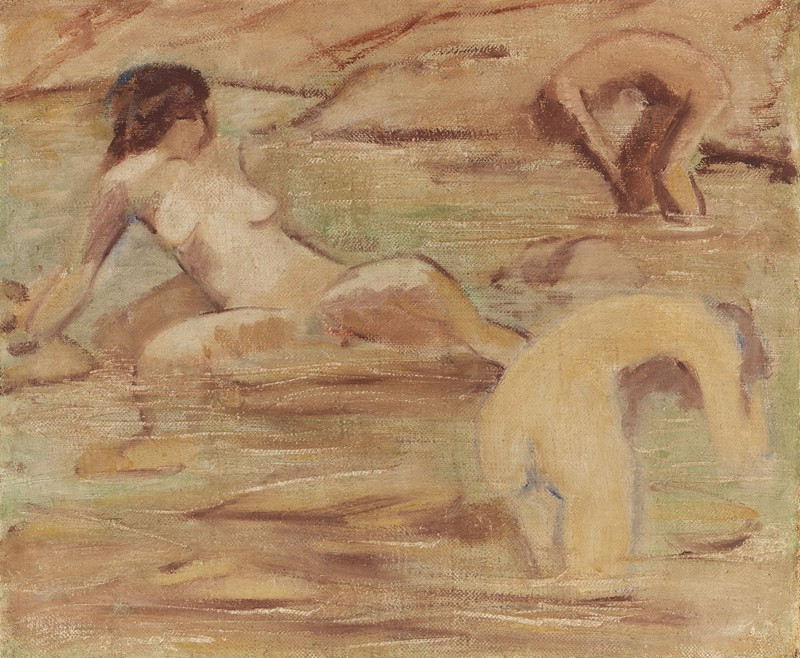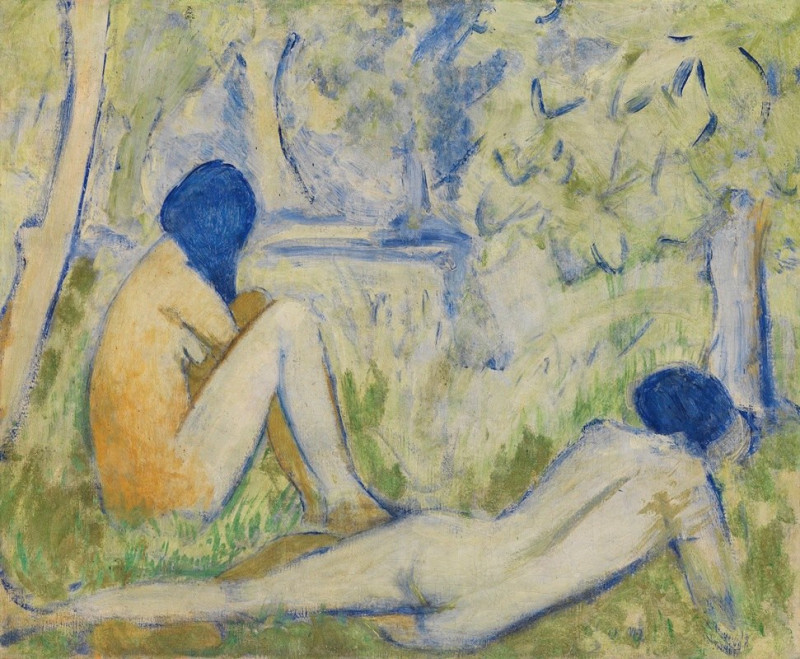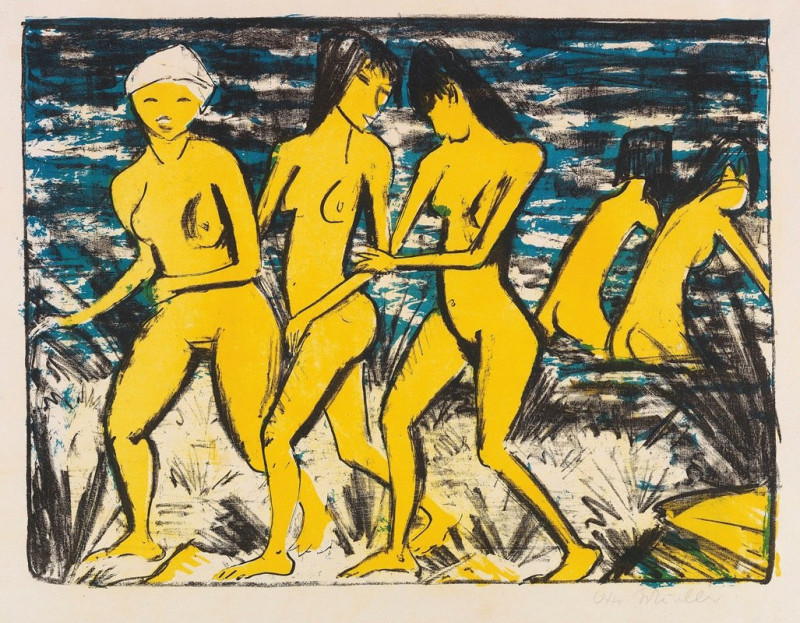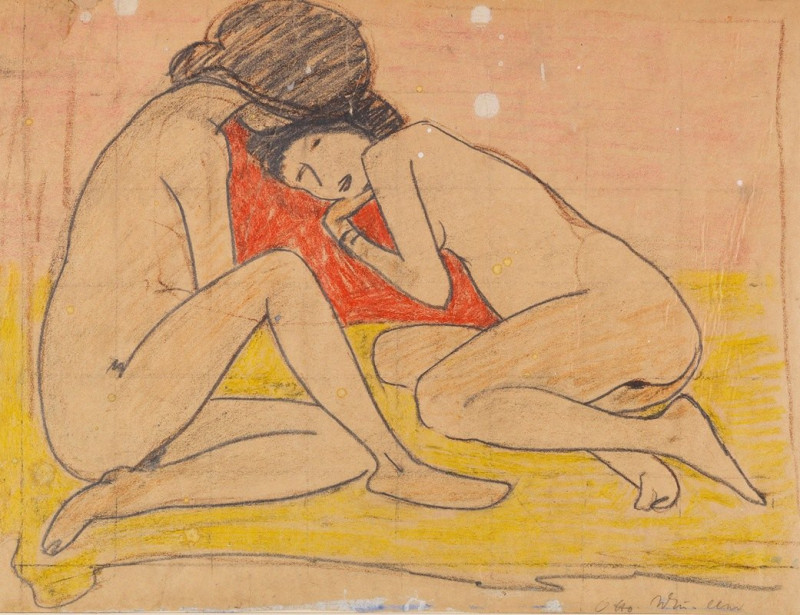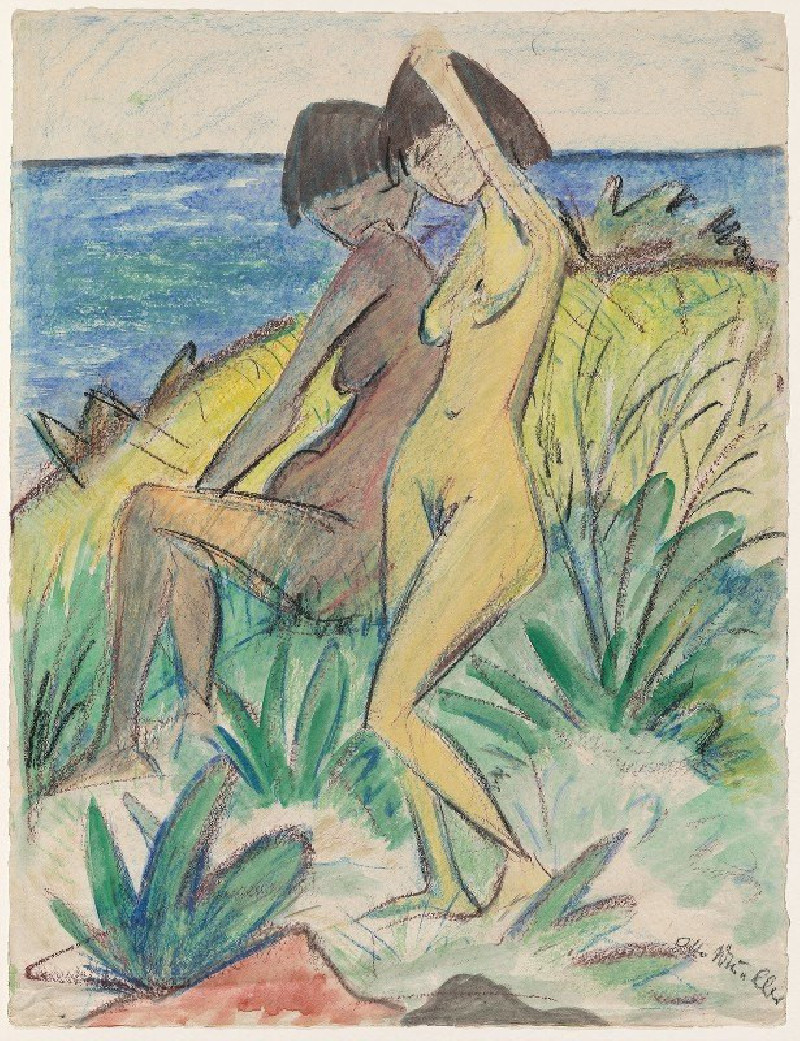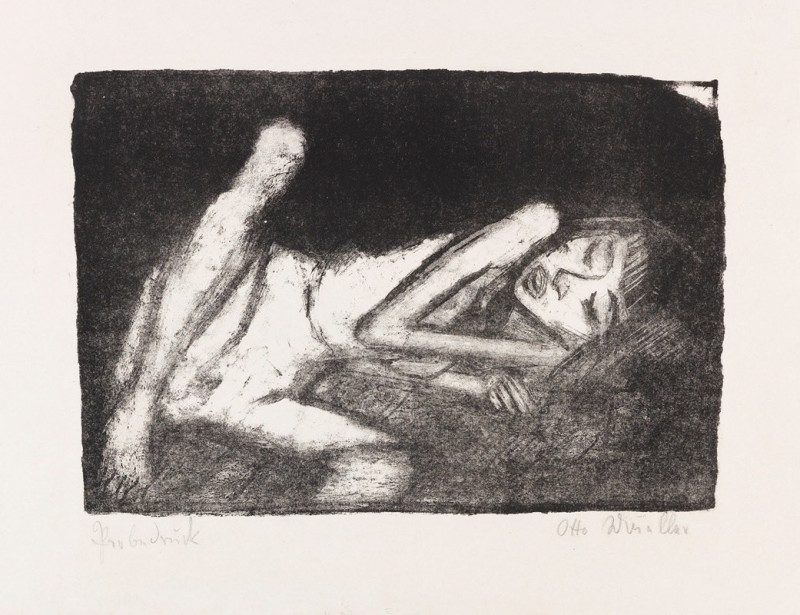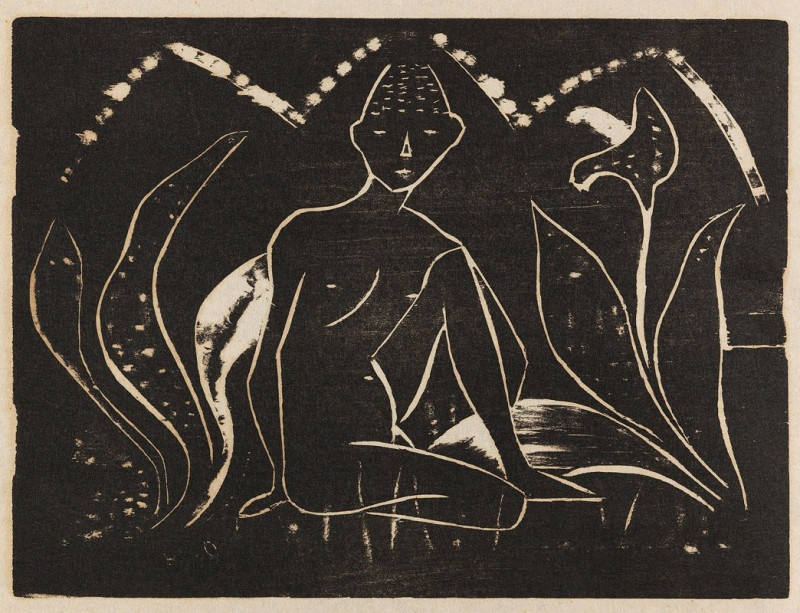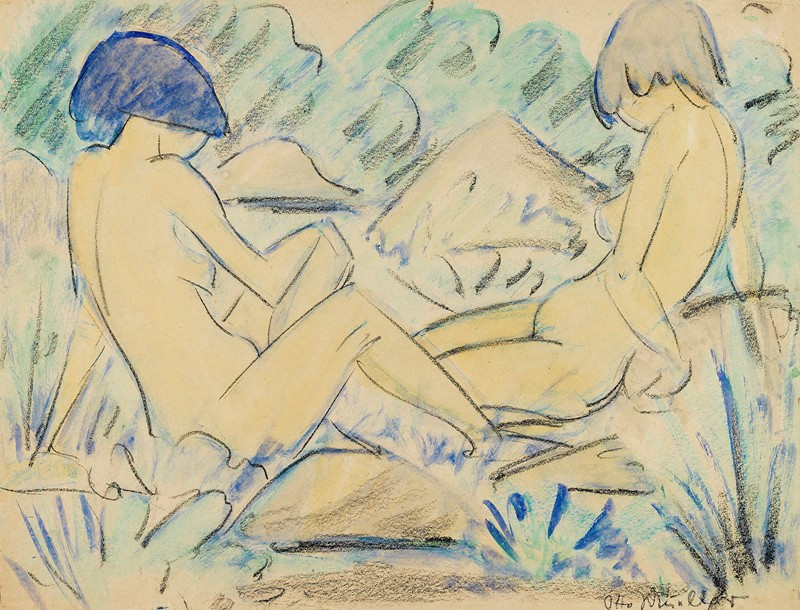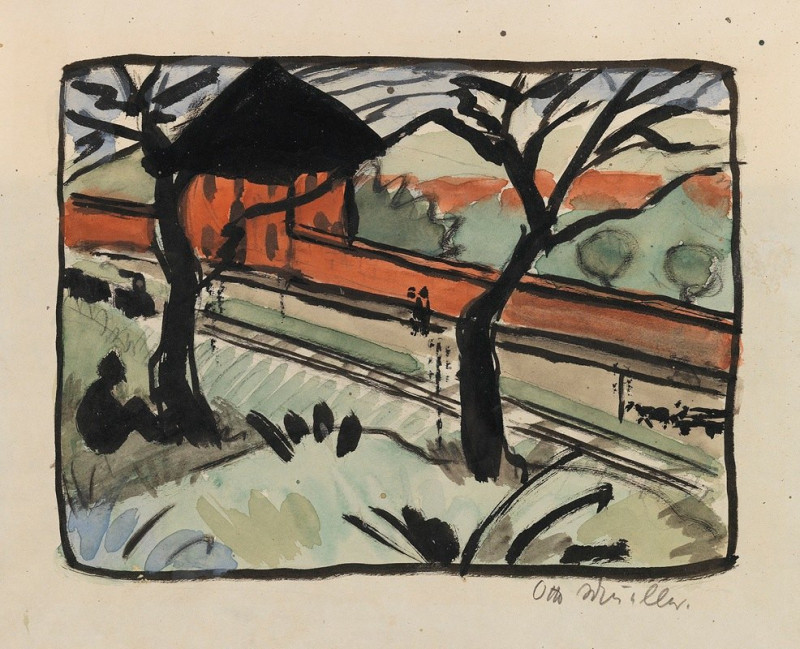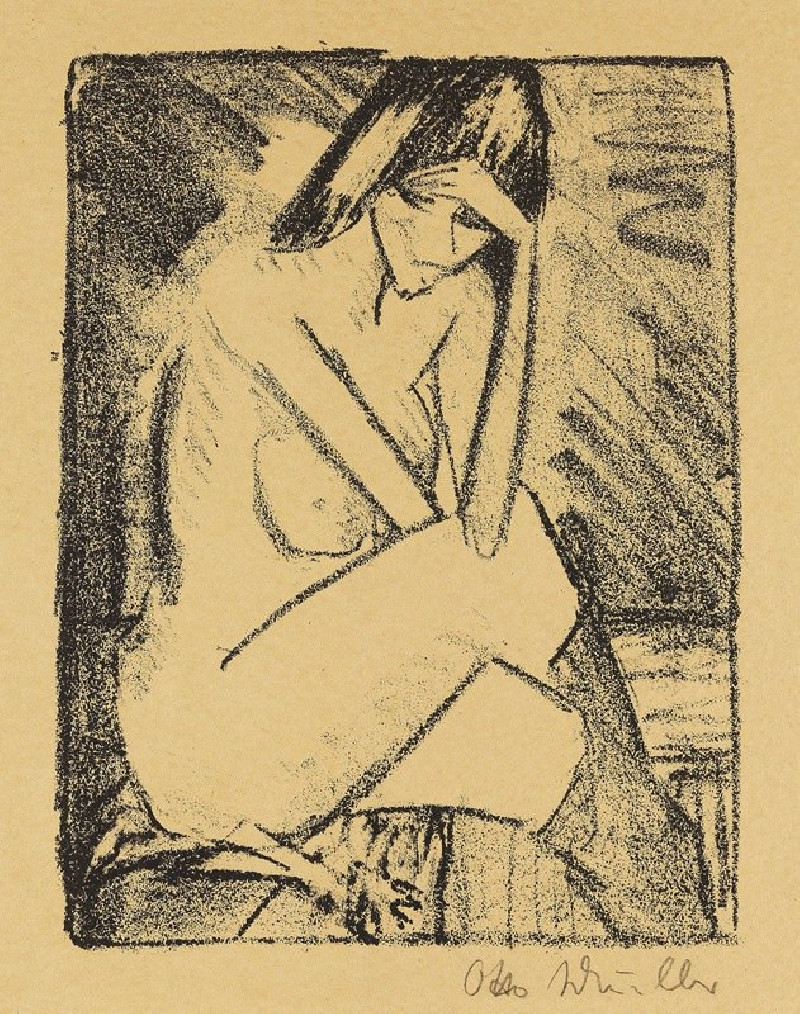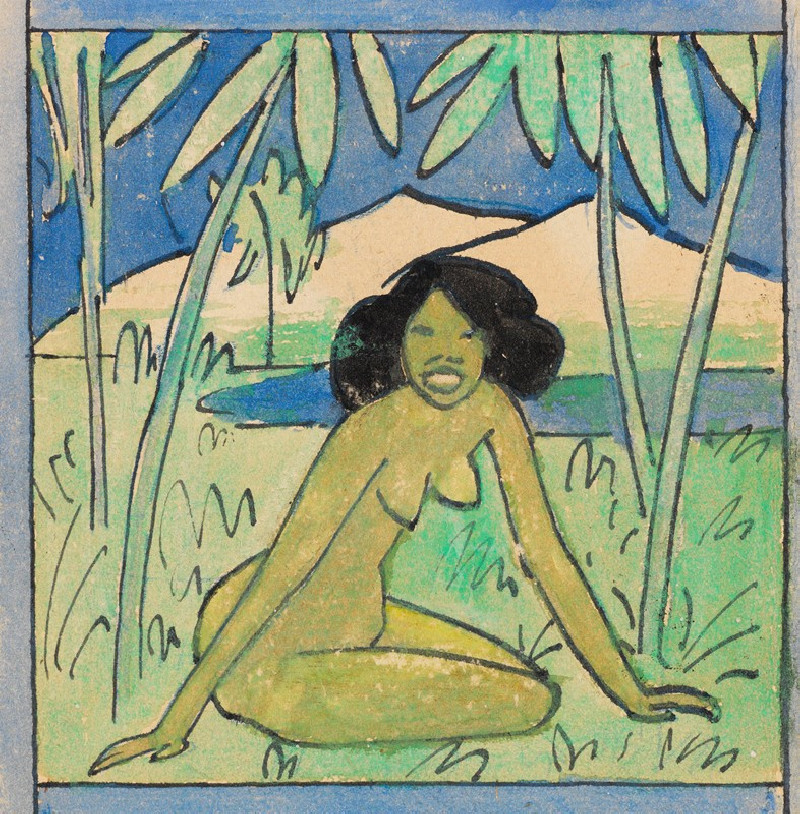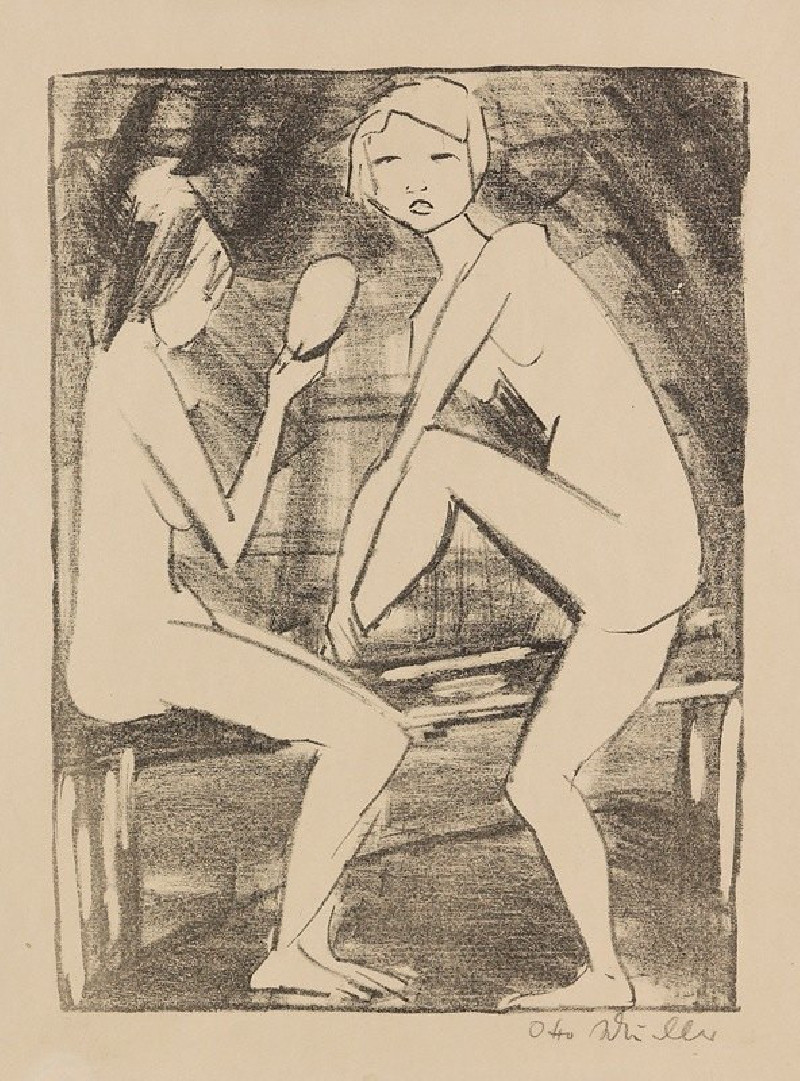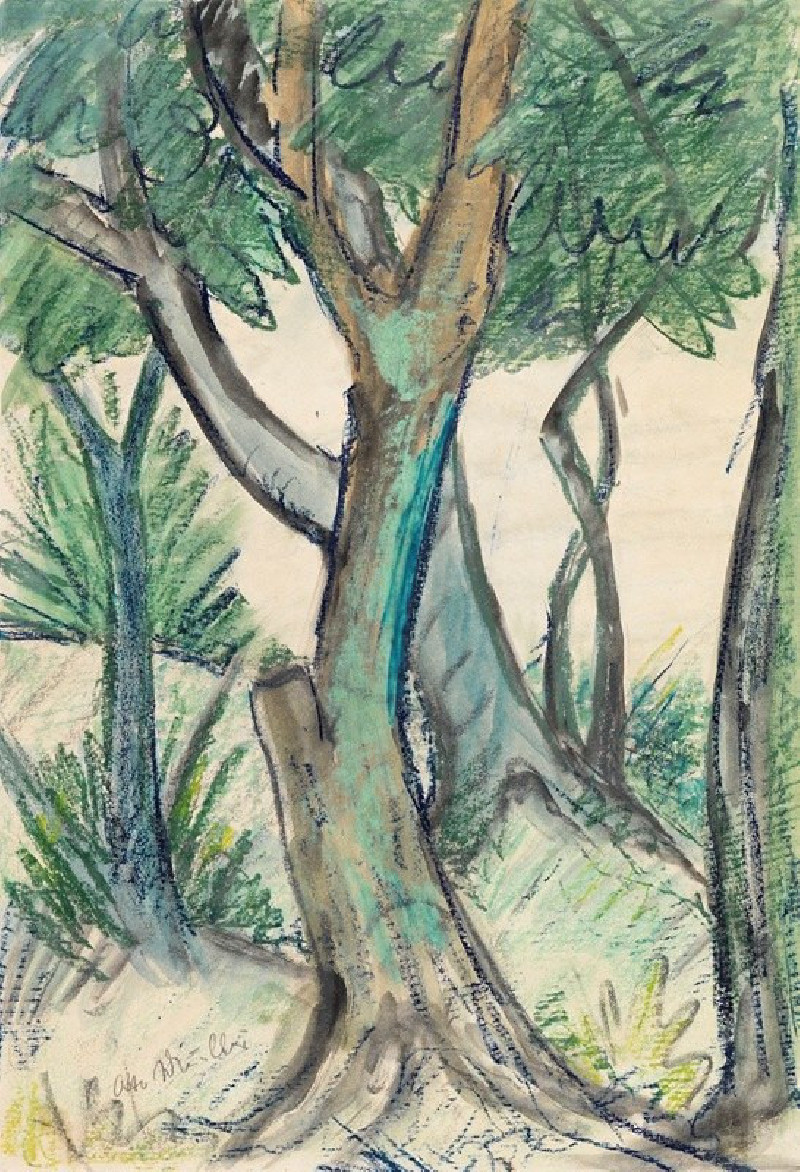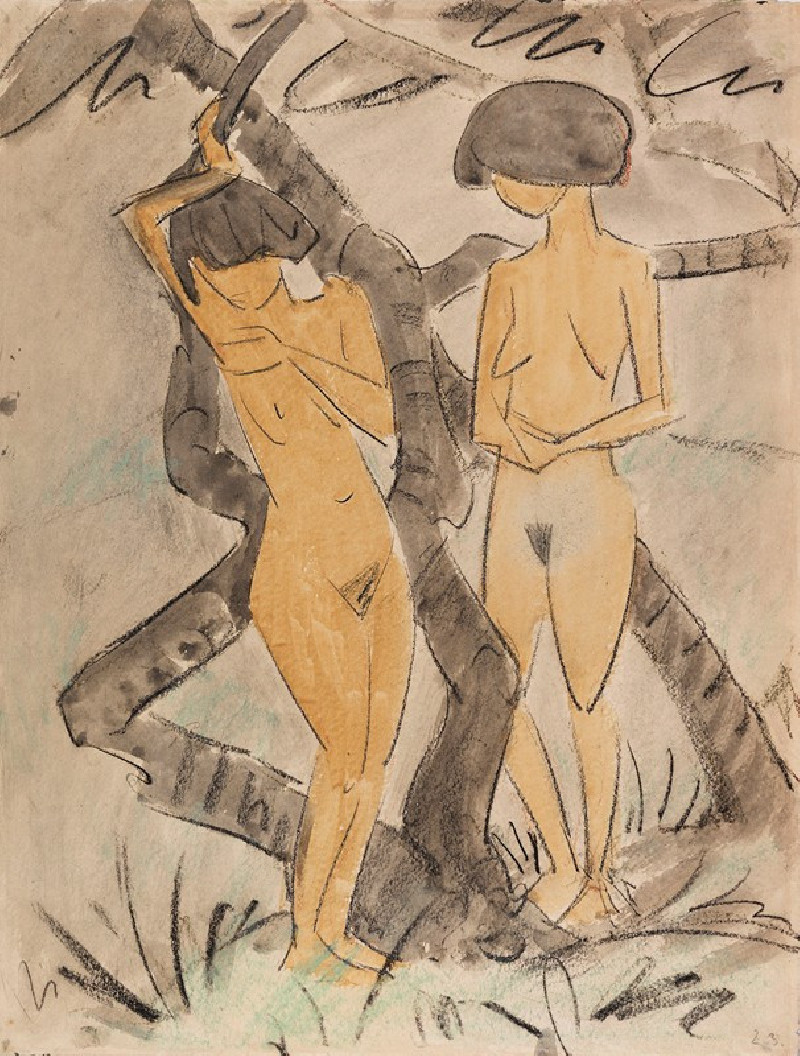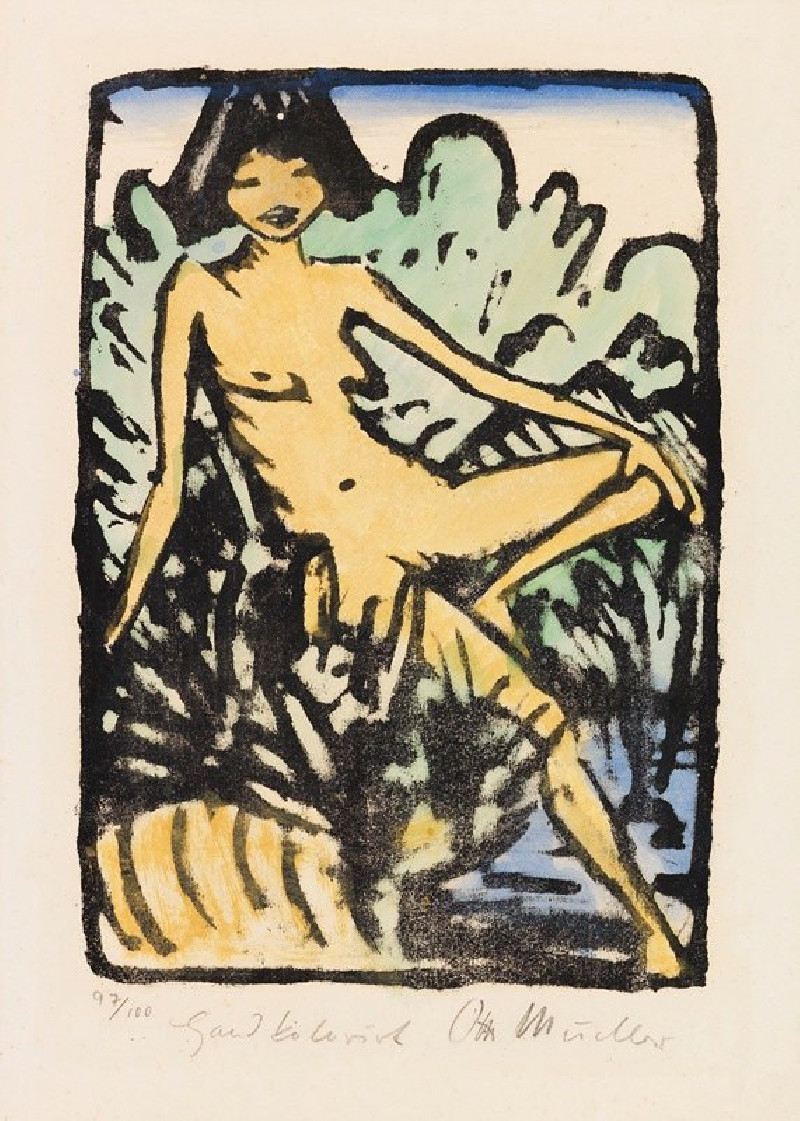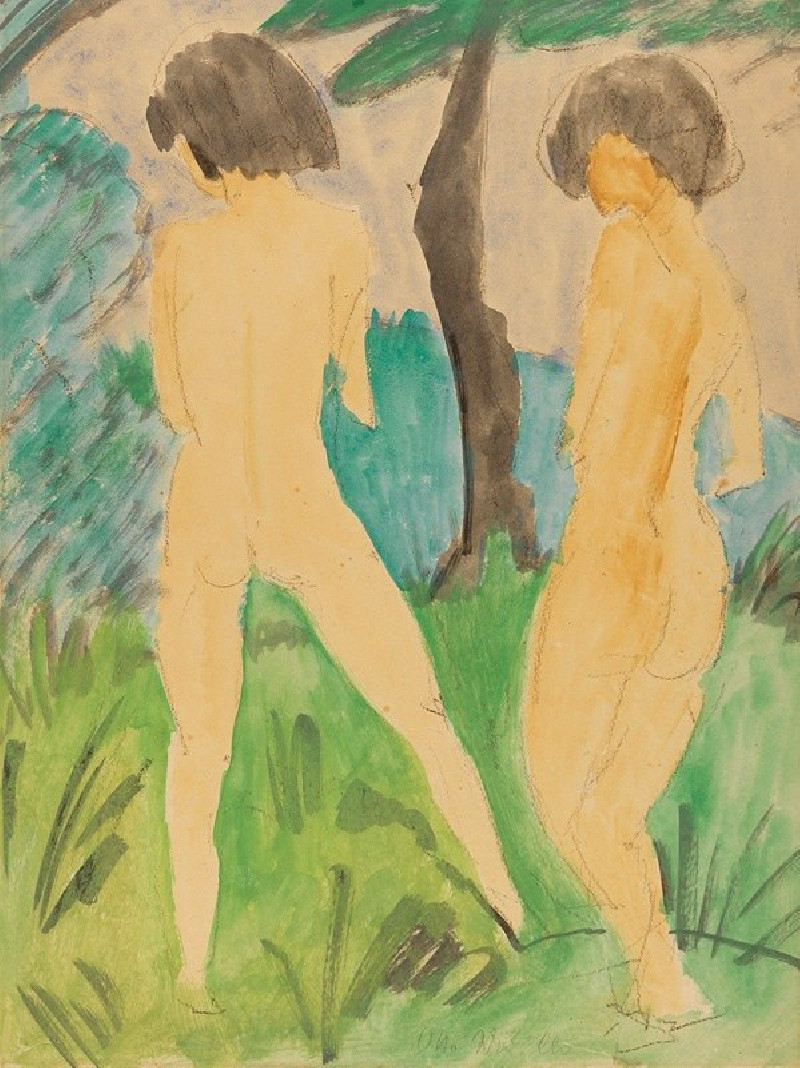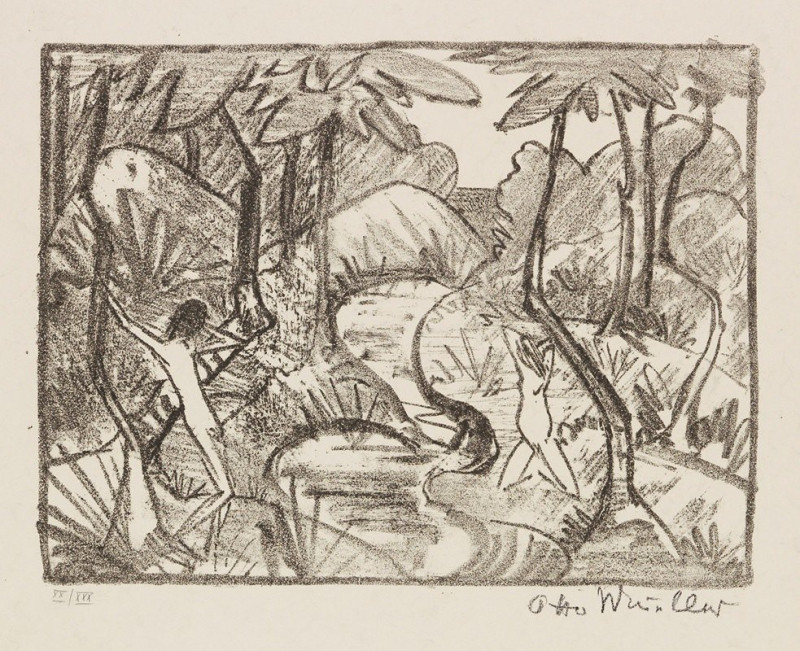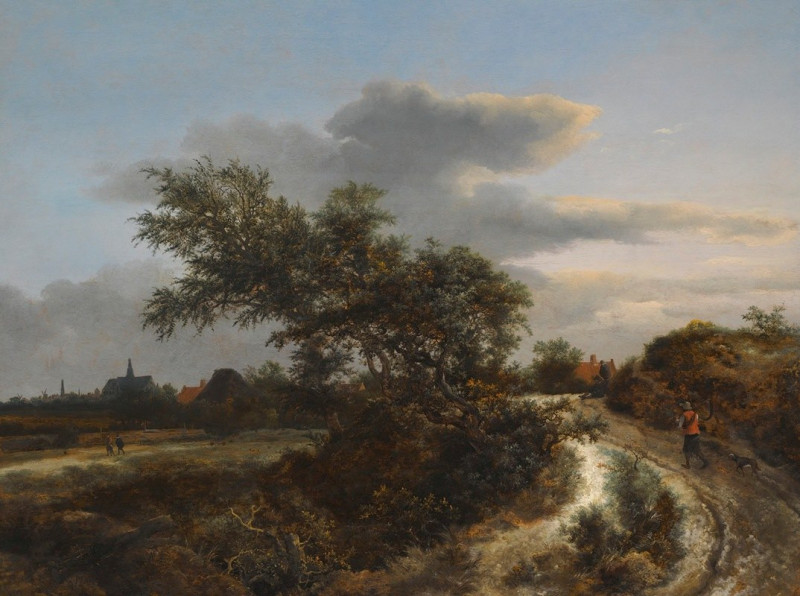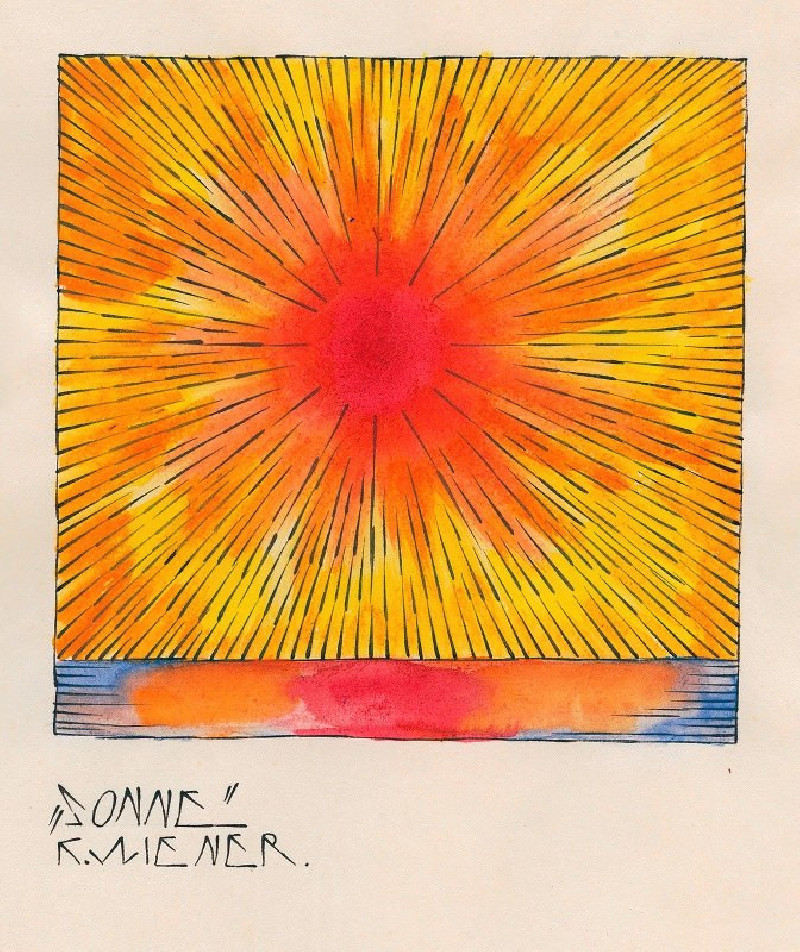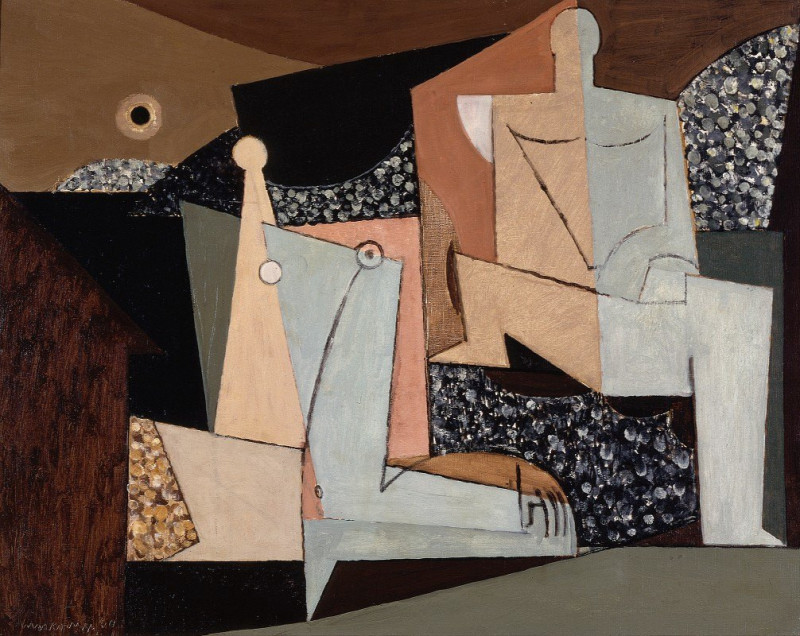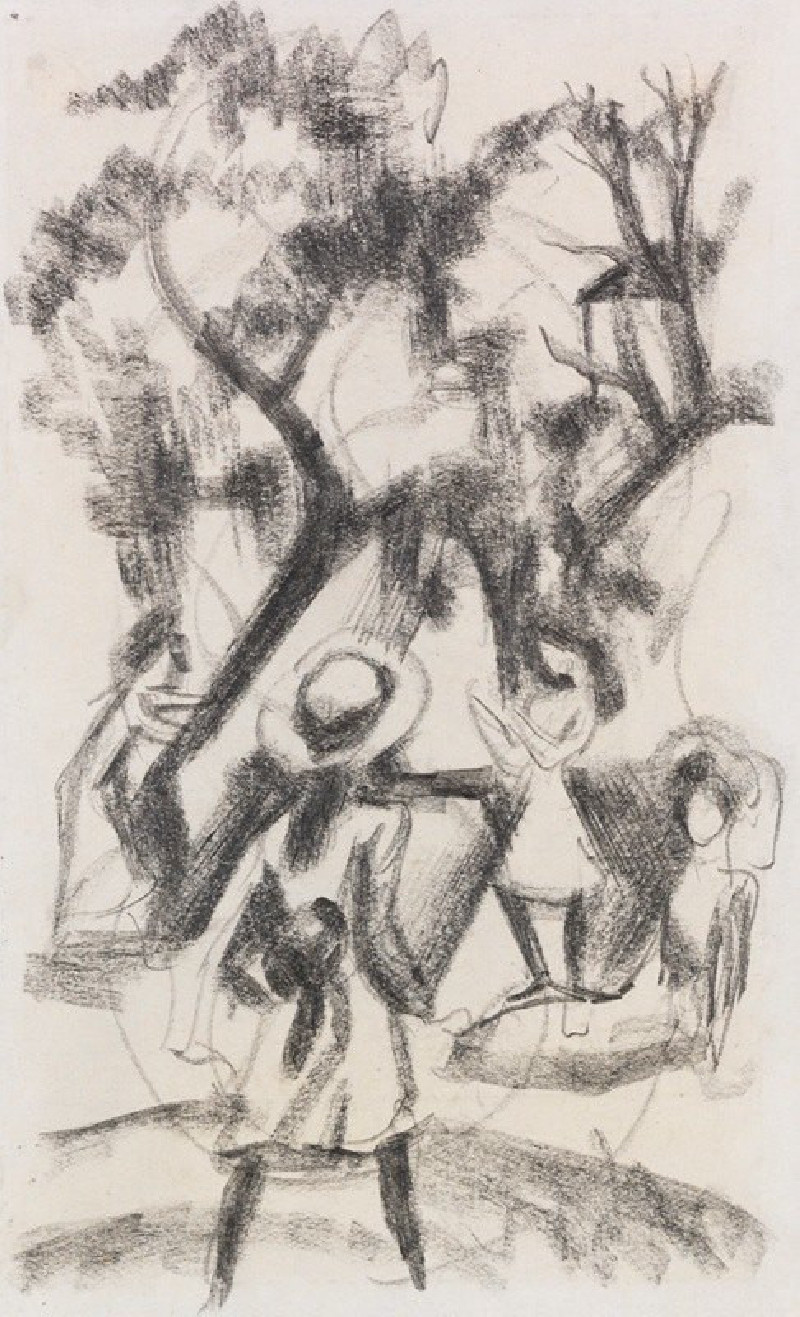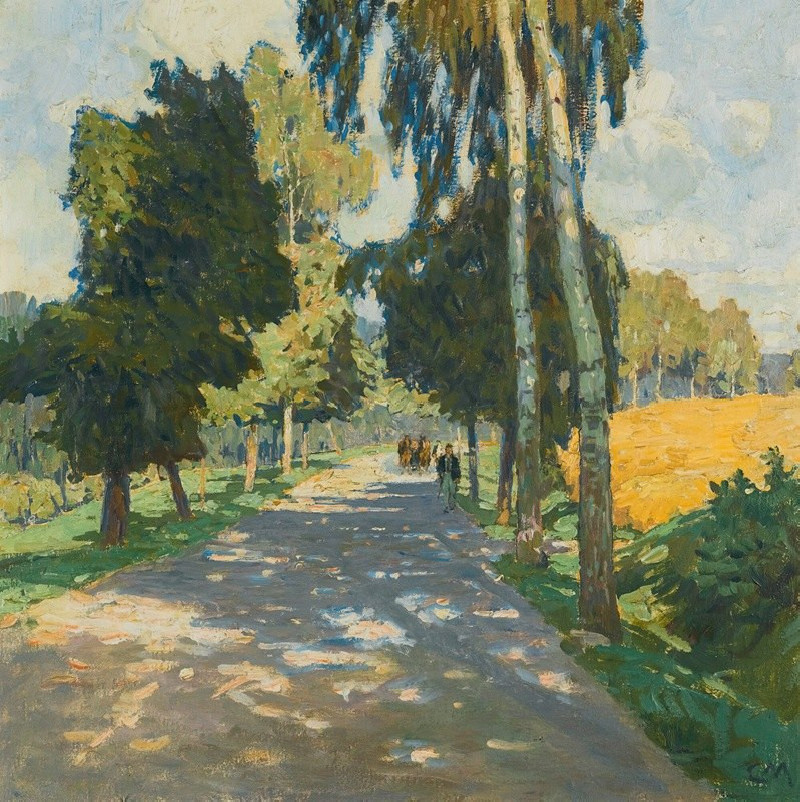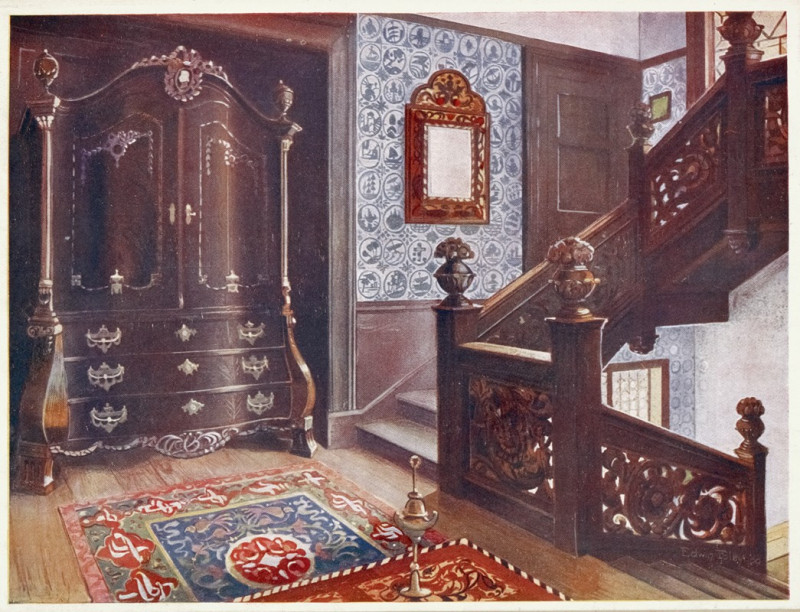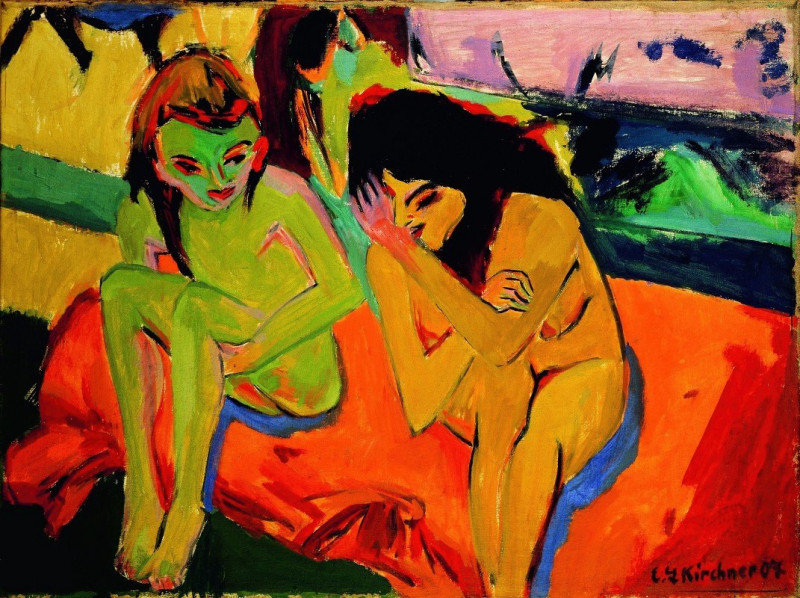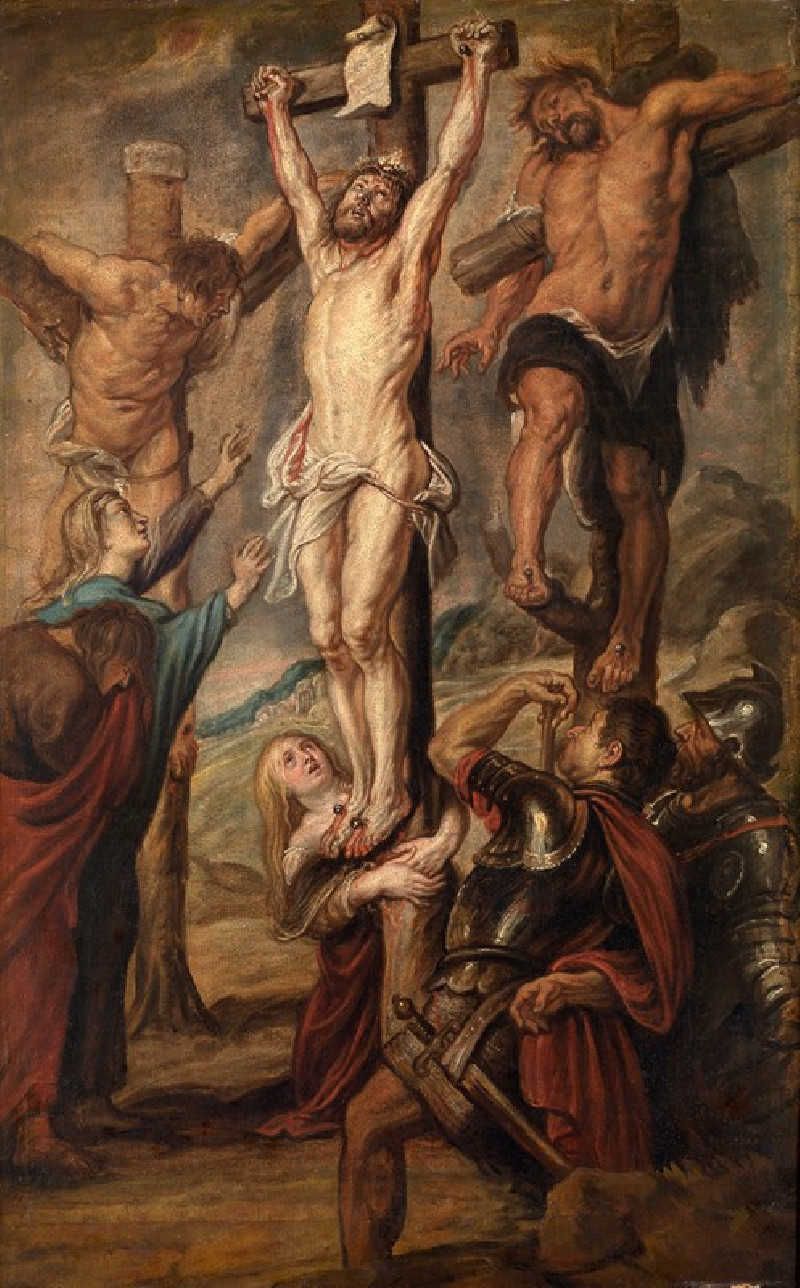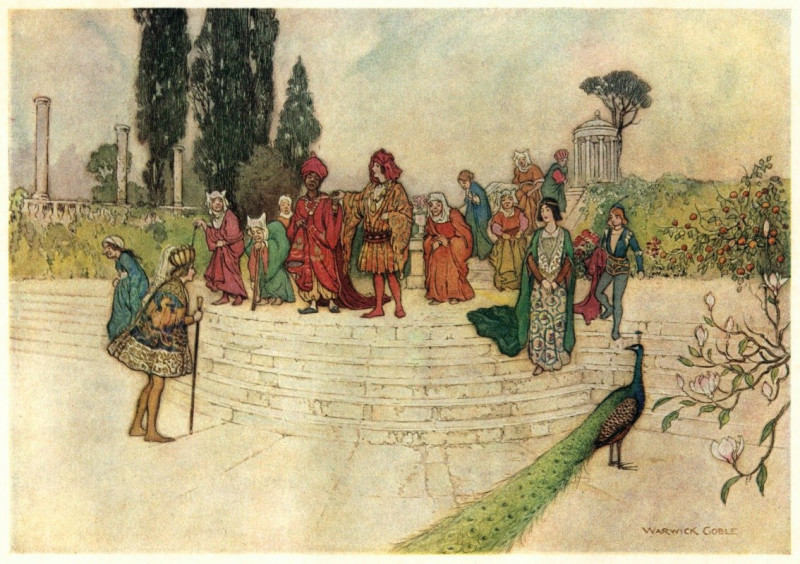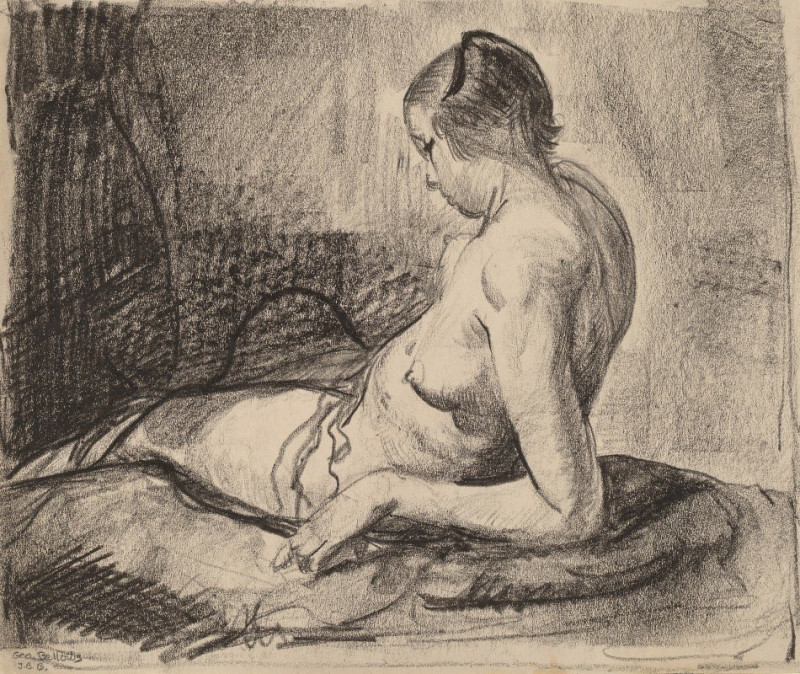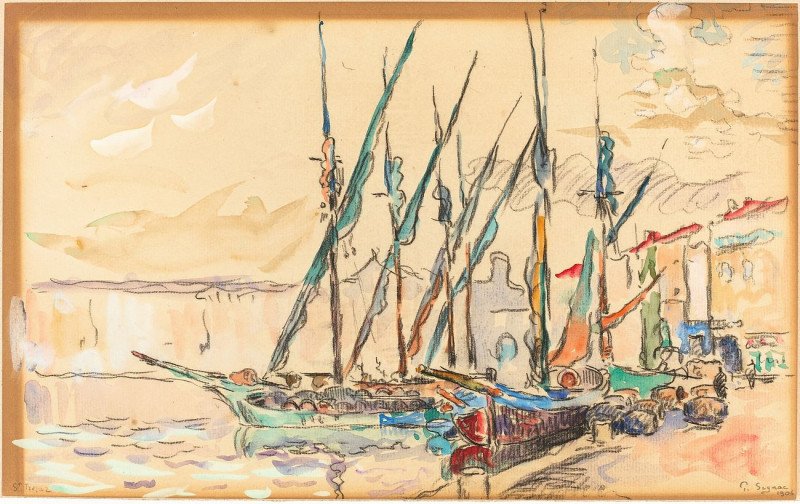Drei badende Mädchen (ca 1911)
Technique: Giclée quality print
Recommended by our customers
More about this artwork
Step into a tranquil scene captured by Otto Mueller, a prominent member of the German Expressionist group Die Brücke. His painting, "Drei badende Mädchen" (ca 1911), offers a glimpse of idyllic simplicity and harmony with nature. The artwork depicts three young women engaged in the intimate and serene act of bathing in a secluded outdoor setting.Mueller's mastery is evident in the soft, earthy tones and fluid brushwork, which create a sense of warmth and unity between the figures and their environment. On the left, one girl reclines leisurely on the bank, her form relaxed and melding into the landscape. The other two figures are captured in more dynamic poses, one bending forward in an elegant arch, while the other dips gracefully into the water.This painting stands out for its celebration of natural beauty and the human form, portrayed here with an almost ethereal quality. Otto Mueller’s work invites viewers to contemplate a moment of peaceful coexistence with the natural world, making "Drei badende Mädchen" a timeless piece that resonates with the tranquility and beauty of unspoiled nature.
Delivery
Returns
Otto Müller was a German painter and printmaker of the Die Brücke expressionist movement.
Mueller was born in Liebau (now Lubawka, Kamienna Góra County), Kreis Landeshut, Silesia. Between 1890 and 1892 he was trained in lithography in Görlitz and Breslau. From 1894 to 1896 he studied at the Academy of Fine Arts in Dresden and continued his study in Munich during 1898. He left Munich's academy after Franz von Stuck classified him as untalented.

